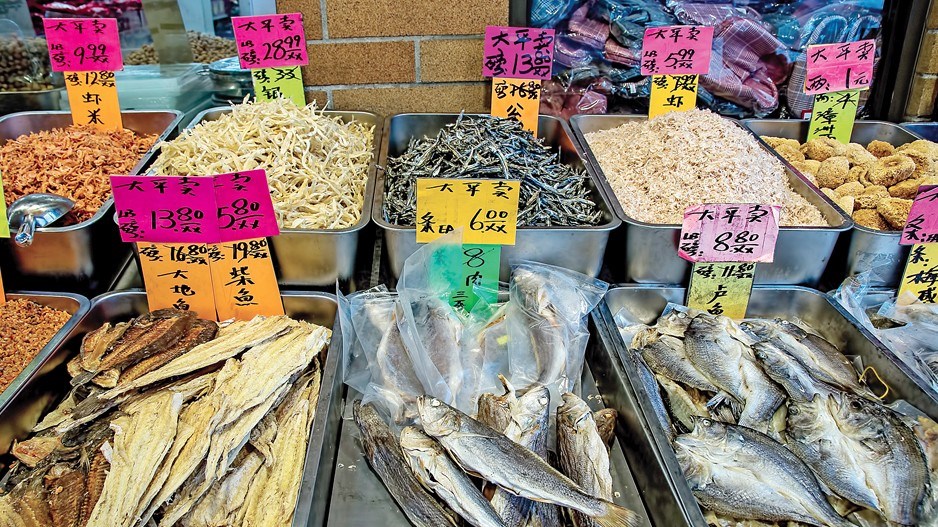Canadians are paying roughly 3% to 5% more for some foods than they were last year. And with rising energy costs and an ongoing logistics chain labour shortage, food prices could continue to be subject to inflationary pressures.
But given all the shocks to the system – a global pandemic that roiled supply chains, a drought that reduced North American crop yields this year, an energy crisis that is pushing up fuel costs and a shortage of truck drivers, the food supply system has proven remarkably resilient, said James Vercammen, an expert in food and agriculture at the University of British Columbia’s Sauder School of Business.
“For the typical, reasonable income earner, nothing is changing too much,” Vercammen said. “In fact, if anything, I’ve been telling people that I’m amazed that we came through COVID without much higher food prices. We’ve got pretty good resilience in our food supply chains.”
When the COVID-19 pandemic first hit in the spring of 2020, there were serious concerns about supply chains and food security, and there were periodic shortages of some consumer goods. This summer, there were empty store shelves in grocery stores for some items resulting from railway disruptions from wildfires.
But for the most part, there haven’t been the kind of food shortages or price spikes that had been feared.
Now, as economies rebound, imbalances in supply and demand have emerged, most notably in energy. Western Europe and China are in a full-blown energy crisis, and, as a result, the price of all fossil fuels – from coal to oil and natural gas – is skyrocketing.
Higher energy prices mean higher input costs for processors and farmers, both here and abroad, and higher transportation costs for commodities that move by ship, rail, truck or plane.
“Energy is an input into virtually everything we consume,” said Werner Antweiler, who specializes in energy markets at the Sauder School of Business.
“So any increase in oil prices, or for that matter, some of the other fossil fuels, will be reflected in higher production costs. That matters for some sectors more than others.”
Fresh seafood and other imported premium products transported as airfreight are more likely to be affected by higher fuel costs.
“But staples and basic supplies are a lot more local, and they would expect that energy prices aren’t going to be dramatically changing the equation for those. I don’t really expect food prices to go up significantly, except for these premium products that are brought in from far away.”
According to the Canadian Consumer Price Index (CCPI), the price of gasoline is up 28% since September 2020, whereas the price of hamburger is up 5%. A bigger concern for inflationary pressure on food prices is labour, Antweiler said.
Canada has a shortage of truck drivers – both for long-haul and local delivery – though it’s nothing like the lorry driver crisis in the U.K., which has resorted to using the military to deliver petrol to gas stations.
According to Statistics Canada, there has been a 123% increase in vacancies for truckers in B.C. since 2015: to 3,215 vacant Class 1 driver positions today compared with 1,440 six years ago. Driver wages have risen 22% since then.
“People have moved out of certain sectors, whether it’s truck drivers in Britain or butchers and food processing workers,” Antweiler said. “And that is where we’re going to see a much larger impact. So if you raise wages by 10%, now that is going to show up as higher food prices.”
Labour issues may be behind a spike in the price of bacon. Quebec’s Olymel pork processing plant was hit with a four-month strike this summer; bacon prices in Canada subsequently increased 15% in August compared with August 2020.
Vercammen agreed that labour costs will probably add more inflationary pressure to food prices than fuel prices will, but even that is not something that is overly concerning.
“These supply chains absorb ups and downs,” Vercammen said.
The impact of the drought that parts of Canada and the U.S. experienced this year has also not had as big of an impact on food prices as one might expect. The drought did affect some grain crops, but that has not translated into any serious price increases for bread.
According to the CCPI, flour was just $0.04 higher in August than it was in August 2020, and the price of bread is actually $0.02 lower.
“There’s so much of a margin built in,” Vercammen said. “When you look at a bag of flour, maybe only 30%, 40% of that is the actual cost of wheat. The supply chain kind of absorbs those price shocks.”
Statistics Canada has estimated food prices in Canada have increased 2.7% this year. But Canada’s Food Price Report, produced by academics at several Canadian universities, projected the increase in food prices in Canada in 2021 would be closer to 5%.
Vercammen said that 5% hike appears to be materializing mainly in supply managed commodities, like dairy, eggs and poultry.
“Vegetables and fruit, so far, they’re flat from a year ago,” he said. “They really haven’t risen.”
Food prices generally can be expected to rise 3% per year as part of general inflation. Pork and poultry prices have risen above that, Vercammen said.
“Beef, even though it looks really expensive, it really hasn’t – from a year ago – risen that much.”
For Canada’s middle class, rising food prices should not be a big concern. It is low-income Canadians and Canadians living in Canada’s north who are most vulnerable to rising food prices.
“Food security is not really aimed at us typical reasonable income earners or high-income earners,” Vercammen said. “It’s the people who are really at the margin, and northern communities and First Nations people who are really food insecure.” •




